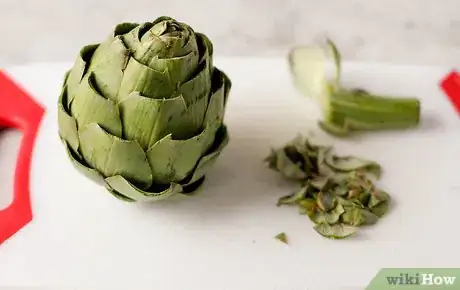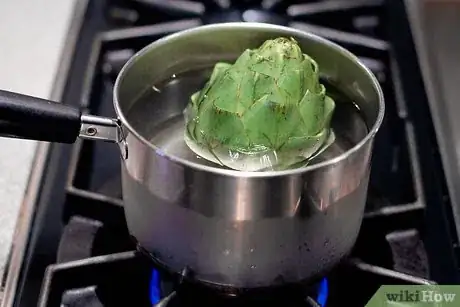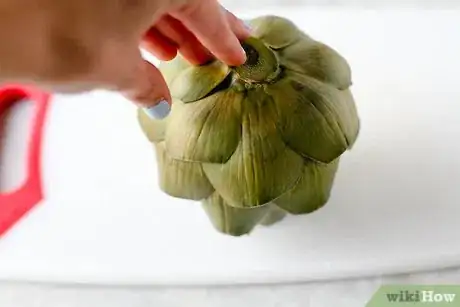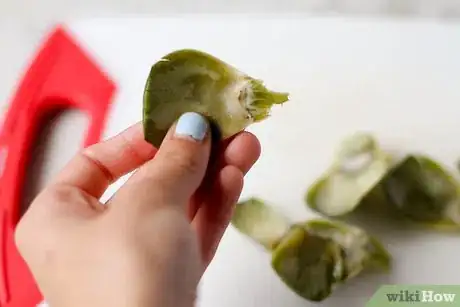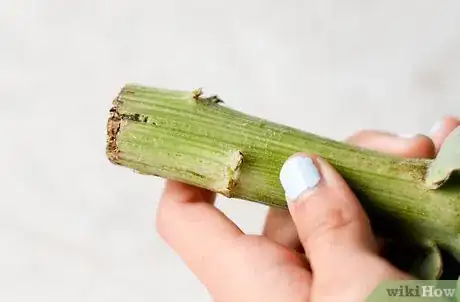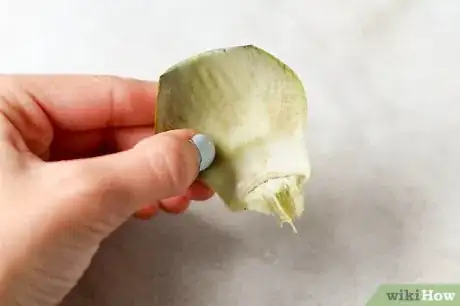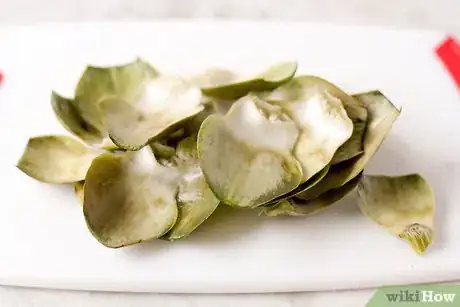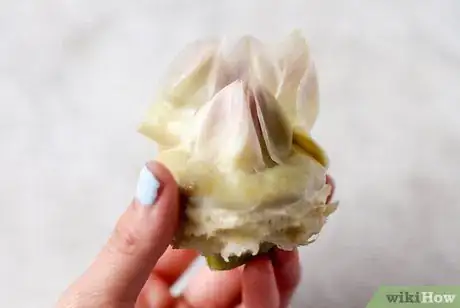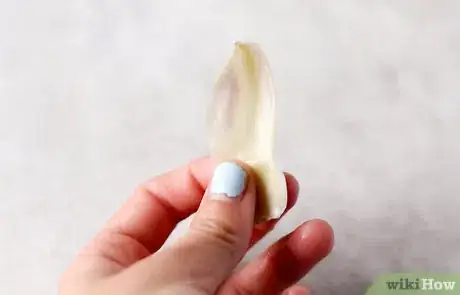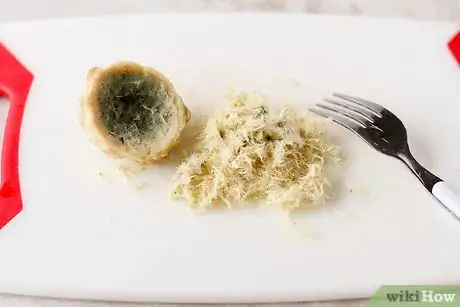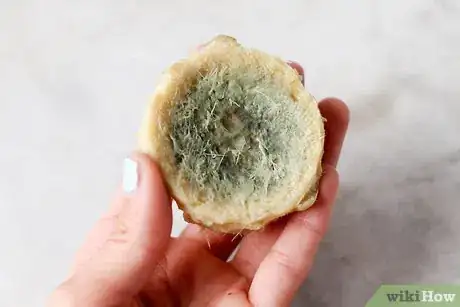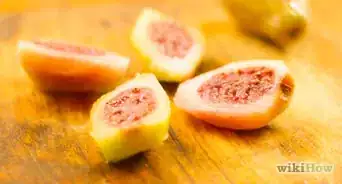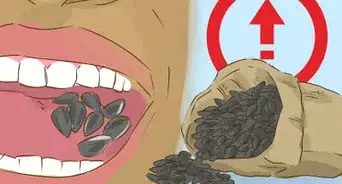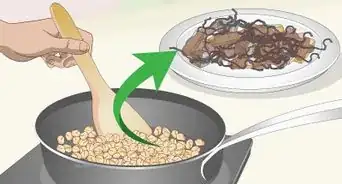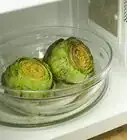wikiHow is a “wiki,” similar to Wikipedia, which means that many of our articles are co-written by multiple authors. To create this article, 29 people, some anonymous, worked to edit and improve it over time.
wikiHow marks an article as reader-approved once it receives enough positive feedback. In this case, 99% of readers who voted found the article helpful, earning it our reader-approved status.
This article has been viewed 651,594 times.
Learn more...
If you've never eaten an artichoke before, this strange vegetable may present some unique challenges when you finally try to prepare or eat one. The process for eating an artichoke is somewhat non-intuitive - the fruit can't be eaten in its raw form because its tough fibers and sharp leaf tips can wreak havoc on your digestive system. However, if approached correctly, an artichoke can be a delicious, healthy and unusual addition to nearly any meal.
Steps
-
1Cut off the sharp leaf tips with an artichoke knife or scissors. This is optional, but it makes eating the artichoke "much" easier later on.
-
2Don't boil the artichoke. Artichokes are steamed. You may place it in a few inches of water and bring the water to a low boil, but only a low boil, then cover. Do not cover them entirely, just a few inches. If you cover them too much with water they will turn brown. Steam for about 50 minutes. You will know when it is done when you can pierce the stem with a fork quite easily - it should feel like you are piercing a soft fruit. You can also microwave them, individually wrapped in plastic, for 8-15 minutes, or put them in a pressure cooker for 20 minutes. You know it is done when you pull at a leaf and it comes away with little resistance.Advertisement
-
3Drain them upside down.
-
4Take the outer leaves off one by one and hold like a potato chip. Take a look at it - you should be able to see the edible part pretty clearly. It's lighter in color and down at the base of the leaf, where it was attached to the heart.
-
5Coat the tip (the part that was attached to the heart of the choke) in whatever dip has been offered. Some common dips are:
- Mayonnaise (try mixing with a little bit of balsamic vinegar or soy sauce)
- Mixture of garlic and butter
- Mixture of oil, salt and vinegar
- Melted butter
- Ranch dressing
-
6Gently nibble or scrape off the tender bits of the bottom of the leaf by putting the leaf in your mouth, closing your teeth on it, and pulling the leaf outwards. The "good part" will detach from the more woody, fibrous part of the leaf easily and leave the tasty bit for you to savor.
-
7Discard the leftover leaves in a container or in a pile on your plate.
-
8Continue until you get to the smaller center leaves that don't have much meatiness to them. These leaves look a bit different than the outer leaves and often have a translucent quality with a bit of purple on them.
-
9Pull off the center leaves. Depending on how well-cooked the artichoke is, you can sometimes lift off the smaller inner leaves all together for one last dip in the sauces and bite the ends off delicately (but don't eat the sharp tips). They cover a finer, almost hairy growth just on top of the heart of the artichoke. Some people call this part the "choke," which is what you will do if you eat it, as it is very prickly.
-
10Remove the choke using gentle strokes with a spoon. If cooked well, the choke will scrape off easily. What remains after the choke is removed is the coveted heart. Many people will try different implements, but a spoon is best and leaves a clear clean heart with no choke left on it.
-
11Eat your heart out. The heart of the artichoke is the most prized portion and often the only part restaurant chefs use in their recipes, but at home you can savor the whole artichoke experience. Enjoy.
Community Q&A
-
QuestionWhy should I cut the tips off of the artichoke?
 Community AnswerArtichoke leaves have little spikes on the ends. Cutting these off will ensure that they don't prick you. Some people also find that cutting the tips off makes it easier to season the artichoke.
Community AnswerArtichoke leaves have little spikes on the ends. Cutting these off will ensure that they don't prick you. Some people also find that cutting the tips off makes it easier to season the artichoke. -
QuestionWhere do artichokes grow?
 Community AnswerArtichokes are best grown in damp weather, with cool summer temperatures and mild winters. They are grown commercially in coastal areas of Northern California. Artichokes are perennials that can survive for up to 6 years in mild-winter areas. Northern gardeners can grow them as an annual by starting indoors early and then harvest in the fall.
Community AnswerArtichokes are best grown in damp weather, with cool summer temperatures and mild winters. They are grown commercially in coastal areas of Northern California. Artichokes are perennials that can survive for up to 6 years in mild-winter areas. Northern gardeners can grow them as an annual by starting indoors early and then harvest in the fall. -
QuestionWhere can I grow artichokes?
 Community AnswerArtichokes should be grown in areas with mild winters and cool summers, but they can be grown in other climates as well.
Community AnswerArtichokes should be grown in areas with mild winters and cool summers, but they can be grown in other climates as well.
Warnings
- Don't confuse what's described here, a globe artichoke, with Jerusalem artichokes and Chinese artichokes, which are completely different plants from which the roots are eaten.⧼thumbs_response⧽
- Do not put the discarded parts in the garbage disposal. Compost if possible; otherwise, simply deposit these in the garbage (or yard/food waste, if your trash removal provides this).⧼thumbs_response⧽
Things You'll Need
- Discard bowl (for the remains of the already eaten leaves)
- Dipping sauce
- Plenty of napkins
About This Article
To eat an artichoke, start by steaming it for 50 minutes or microwaving it for 10 minutes. After you've cooked the artichoke, peel the outer leaves off and use your teeth to scrape off the tender, edible parts at the base of the leaves. Then, remove and discard the smaller, translucent leaves that are near the center of the artichoke and use a spoon to scrape off the prickly fibers that are beneath them. You'll be left with the artichoke heart, which you can eat as is or add to your favorite recipes. If you want to learn how to drain the artichoke after you cook it, keep reading the article!
